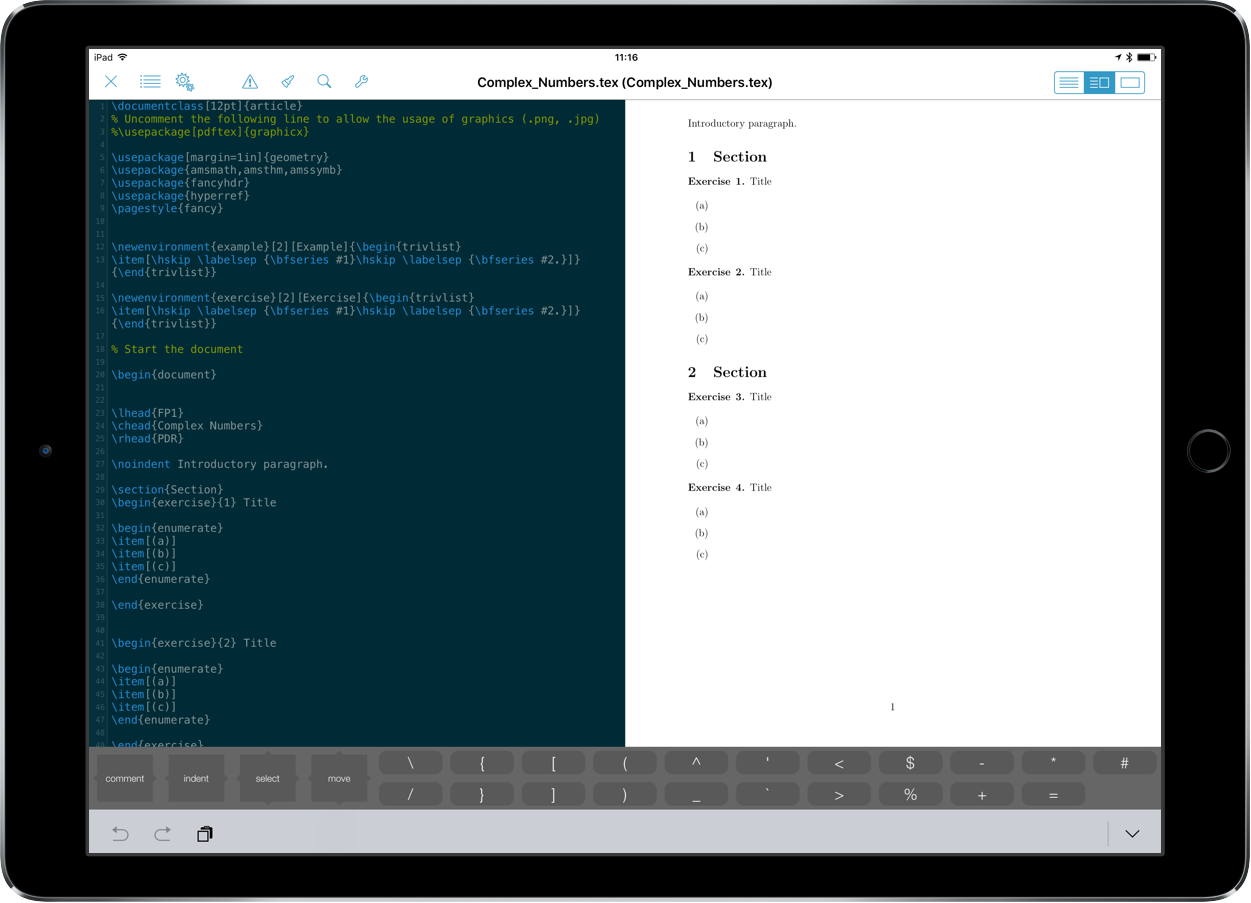Apple Updates Pages with LaTeX Support

Amongst the flurry of new features that accompanied the release of iOS 10.3 yesterday, one small change to Apple’s Pages on iOS could make a big difference to maths teachers.
Pages now supports entering equations using LaTeX, a typesetting language which is especially useful for mathematics. LaTeX can be used to create entire documents using a sequence of plain text commands to define exactly how the output PDF should look. It particularly appeals to nerds who enjoy the precision that a programming environment offers, but it’s a necessity for anyone who wants to write a mathematical or scientific paper. Once you’ve learnt the language, entering mathematical symbols and equations in the exact way you want them to appear becomes fast and precise, and it also gives you a lot of control over layout. Both of these things come as a breath of fresh air to anyone who has had to deal with equation editor or dragging images around in Microsoft Word.
For non-nerds (and not all maths teachers are), learning to lay out a document using what looks scarily like a programming language can be intimidating. At first, there is a lot of debugging to get things the way you want them, and it can be fiddly at times. The new feature that Pages now offers creates what I believe is an ideal middle ground for people who want to dabble in a little LaTeX without having to worry about some of the more technical details.
As an excellent word processor, Pages on iOS offers all of the standard features you’d want and covers the vast majority of use cases. Creating a worksheet is easy, and only when you need to add an equation or formula do you need to jump into LaTeX. By picking up just a couple of commands for common mathematical symbols, you can easily and quickly create an equation which looks just the way you want it to. The extra keyboard row in the equation editor view – borrowed from Apple’s Swift Playgrounds app – is also a really nice touch. Once you’ve created your equation, you can easily make changes to it or move it around.
For an even more accessible way of creating equations in LaTeX, the wonderful MyScript MathPad lets you draw equations with your finger or with a stylus and export them to LaTeX. Unlocking the ability to copy and paste the LaTeX requires a £2.99 in-app purchase. It’s a great way to get started if you are a beginner.
If the LaTeX bug bites, there are advanced options for pro users. I’ve been playing around with the amazingly full featured Texpad, which as far as I can tell is the only iOS app which offers a split pane view, so that you can see your typesetting commands and a preview of the output at the same time.

I’m not currently a huge iWork user, but with the recent updates to Pages, and with all the good things I hear about Keynote, I think now may be the time to revisit the suite. Even the slightly neglected Numbers is one I want to look at again as I am currently rethinking my Markbook workflow. It’s great to see that Apple still believes in these apps, and in their future on iOS.